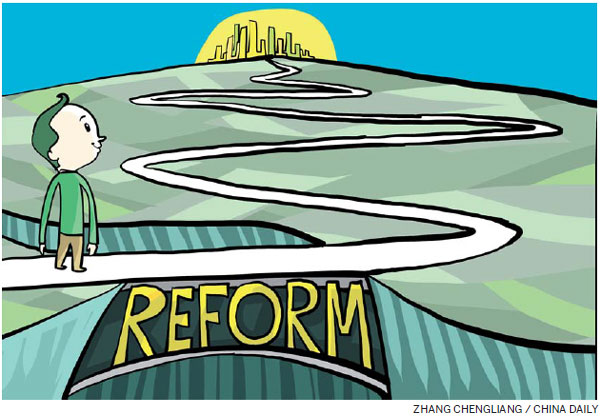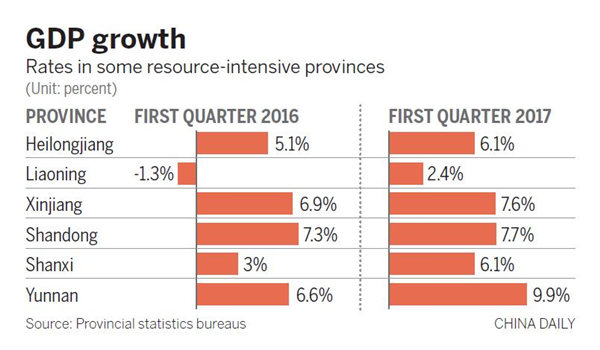No retreat on reforms as growth rises

Economic recovery in resource-intensive and export-oriented provinces gathered pace in the first quarter as economic restructuring efforts began to bear fruit.
Sustained efforts to push reforms are needed because it remains unclear whether factors such as the commodity price surge and recovery of demand will continue to drive growth, according to experts.
Fifteen of 31 provincial-level regions nationwide had faster growth than in the same period last year, according to statistics bureaus.
Heilongjiang and Liaoning provinces, which rely largely on traditional heavy industries that are heavy users of resources like coal, are among those that achieved higher first-quarter growth.
Heilongjiang grew by 6.1 percent, up from 5.1 percent in the same period in 2016. Liaoning achieved 2.4 percent growth, up from a negative 1.3 percent. Liaoning officials pledged early this year to improve the credibility of statistics after admitting that some data submitted from 2011 to 2014 had been falsified.
"Structural upgrades helped economic growth reach the highest level since 2014," said Ge Xin, head of the Heilongjiang Bureau of Statistics.
The latest data from the Heilongjiang Development and Reform Commission show the province's traditional economy played a smaller part in driving growth, and energy industries contributed only about 8 percent of total economic output in 2016, compared with 22 percent in 2011.
But more reform efforts are needed because part of the growth in the region was driven by the surge in coal and steel prices at the beginning of the year, according to Cheng Gong, a senior China National Coal Association analyst.
"Enterprises face more pressure to achieve profits as the price surge is not very likely to continue in coming months," he said. "The peak season for coal is winter."
The Bohai-Rim Steam-Coal Price Index, a key gauge of coal prices, has dropped for five consecutive weeks.
"As China plans to continue efforts to cut overcapacity this year, enterprises in the traditional sectors need more policy and financial support from the government while they are striving to restructure their business toward more sustainable sectors such as tourism," Cheng said.
Local governments need to continue efforts to move away from relying on traditional sectors, he said.
The recent uptick in demand boosted total export and import volume in Guangdong province to 1.45 trillion yuan ($210 billion) in the first quarter, the highest level for that quarter since 2012, said Xing Xiaowei, head of the Guangdong Bureau of Statistics.
Guangdong ranked at the top of provincial areas in gross domestic product in the first quarter, with 1.94 trillion yuan of GDP, according to the bureau.
The need to continue structural changes also applies to export-oriented regions because recovery of demand in the global market over the long term remains weak, said Liu Yuanchun, an economics professor at Renmin University of China.


















